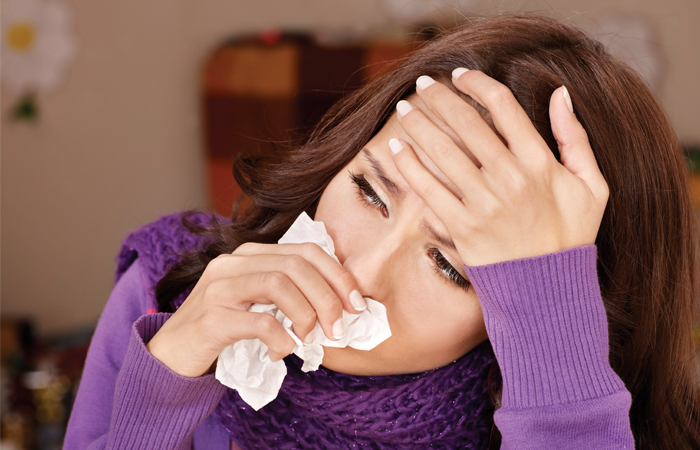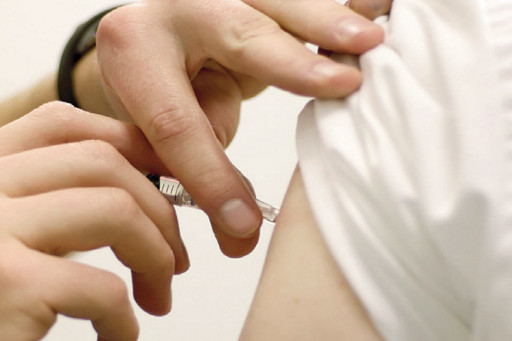In OTC
Bookmark
Record learning outcomes
After a successful pharmacy flu vaccination programme in 2015/16, it’s all hands on deck to make this year’s even better. But how can pharmacy make the most of the service and advise patients on how best to deal with winter ailments?
Every year, flu cases put extra pressure on the NHS. An outbreak of flu can have a devastating impact, causing severe complications in young children and in people with chronic conditions such as asthma, diabetes and heart problems. In April 2016, the Office for National Statistics (ONS) revealed that most deaths last winter coincided with the increase in hospital admissions for flu and reports of numerous outbreaks of the virus in care homes.

The annual flu jab provides the best protection against the virus, even though last year there was evidence that it was less effective than expected. According to the Flu Plan Winter 2016/17, pharmacists and pharmacy teams play an essential role in educating patients about the importance of flu vaccinations and treating the infection appropriately.
Pharmacy figures
In autumn/winter 2015/16, more than half a million people chose to receive the NHS flu vaccination in a community pharmacy setting. Data shows that 7,195 community pharmacies provided the NHS England Flu Vaccination Service last year – that’s nearly 61 per cent of all community pharmacies in the country. The average number of vaccinations carried out by each participating pharmacy was 83, but two pharmacies greatly exceeded this by completing over 1,000 vaccinations each. The pharmacy at Charing Practice in Ashford, Kent, delivered 1,682 vaccinations and JWW Allison and Sons Ltd in Cockermouth, Cumbria, delivered 1,249.
Thanks to last year’s success, NHS England announced in May that it would re-commission the Community Pharmacy Seasonal Influenza Vaccination programme for 2016/17.
“Flu vaccinations are a great example of how pharmacists can help ease overstretched GP surgeries,” says Sandra Gidley, chair of the Royal Pharmaceutical Society (RPS) English Pharmacy Board. “Close and effective collaboration with our GP colleagues should help make this year even more successful in terms of delivery.” So how can community pharmacies ensure their service runs smoothly this winter and continues to achieve success?
Eligibility
The Community Pharmacy Seasonal Influenza Vaccination service is aimed at pharmacy customers who are aged 18 and over and who fall into one of the eligible categories, which include the over-65s and those with chronic health conditions.
Eligibility for the vaccination is the same as it was last year, but carers are a particular focus of this year’s campaign. All community pharmacy contractors in England are being sent a Flu Vaccination Service poster aimed at carers to help promote the service to this target group.
The main flu jab season runs from the beginning of September until the end of December, and this year the service is running until the end of March. Pharmacy teams are advised to apply their clinical judgement from January to March and to be aware of how widespread flu is in their community at the time.
The cold war

Most people catch a cold at least once in the autumn and winter months. Some are also likely to have a bout of flu. In most cases, the symptoms will resolve on their own and there’s no need for a GP visit. In fact, many of the symptoms can be eased with over-the-counter medicines and self care measures. Certain groups are at a higher risk of complications, so it’s important that pharmacy staff know when customers need to be referred to the pharmacist for advice.
This month, NHS England and Public Health England have again launched a joint national initiative to help at-risk groups prepare for the winter months. Their “Stay Well This Winter” campaign encourages parents of two to seven-year-olds, pregnant women, those with long-term health conditions and people aged over 65 to get the free NHS flu vaccination and take steps to treat their symptoms early on.
If customers experience cold or flu symptoms, they should be encouraged to rest as much as possible, eat well and drink plenty of fluids, especially if they have a fever. Most colds last a week at the most. The main symptoms are a sore throat, nasal congestion and a cough. Severe colds and flu can also cause a high temperature, aching muscles and headache.
If nasal congestion is troublesome, customers could try decongestants (tablets or nasal sprays), but these shouldn’t be used for longer than a week and aren’t suitable for people with certain medical conditions or who are taking certain medicines. Steam inhalation and vapour rubs may be a suitable alternative, especially for babies and young children. Simple painkillers, such as paracetamol or ibuprofen, can help with pain and/or fever.
Some people find cough medicines and remedies helpful if they have a cough. A honey and lemon mixture or a warm drink may also be effective because they keep the throat lubricated. Sore throats may be relieved temporarily with lozenges, throat sprays, ice cubes or ice lollies. Regularly gargling with an antibacterial mouthwash or warm, salty water can reduce any underlying swelling and inflammation.
It’s important to stress to customers that antibiotics are not usually of any use, as colds and flu are caused by viruses rather than bacteria. Customers should, however, see their GP if they have an underlying chronic condition (e.g. asthma, diabetes or heart disease), a very high temperature, a rash, symptoms that are not usually associated with colds or flu (e.g. severe headache or abdominal pain) or any signs of dehydration (e.g. lethargy).
Tips for success
- Early promotion
Flu vaccination services should be promoted well before the season begins on 1 September each year, say those with experience of providing them. “Promote the service from the middle of August,” advises Sultan ‘Sid’ Dajani, an independent community pharmacist and member of the RPS English Pharmacy Board, who vaccinates adults against flu both privately and on the NHS. “Keep promotional material at the end of the season for next year, including the bunting, and use it before the new ones arrive.”
Nat Mitchell, pharmacist and director of JWW Allison and Sons Ltd, says you can’t over promote the service. “We spend money on marketing in local magazines leading up to the flu jab season and have banners and bunting,” he says. “This is a small town and word gets around, plus we use social media.”
- Stock take
According to Sunil Kochhar, a community pharmacist and PSNC regional representative, speaking on a recent PSNC webinar, pharmacies need to get organised by ordering enough vaccines in advance – bearing in mind their fridge space. Sid suggests going for a minimum order based on the previous year’s requirements and then ordering more if required.
“We order according to the predicted figures, allowing extra for people who just walk in,” says Liz Tallett, pharmacy technician at The Charing Pharmacy. “If we need to, we can always order more during the season. Most of the people asking for vaccinations are patients who are registered at the surgery, so this makes it easier to manage our stock.”
- Get staff on board
According to an NHS England spokesperson, the community pharmacies that appear to have been most successful at vaccinating patients against flu are those that have educated their entire teams about the service and used all team members to promote it to patients.
Sid agrees that it’s essential to get the whole pharmacy team on board. “Use counter staff for the initial contact and screening so the pharmacist has time to do the jabs,” he says. “They can also put the patient at ease and help them fill in the appropriate forms. If booking locums, make sure they are accredited if you’re taking them on during the flu vaccination period.”
Liz says that at The Charing Pharmacy there are at least two people doing flu jabs at any one time, and as many as five in total, but the demand drops after the first couple of weeks.
Nat suggests employing two pharmacists during the service roll-out, if possible. “That way both your flu service and your prescription business won’t be harmed,” he says. “We have one person who can do the vaccines (me), but have two pharmacists in the store, so there’s always someone to deal with general pharmacy matters. Flu vaccinations always come first at this time of year, above most other pharmacy jobs. I find this is the most profitable way of making the service work.”
- Organise your service
Sunil suggests consolidating the service into a six-week period to focus on flu jabs above other services. Each pharmacy needs to decide whether to offer an appointment-based system or a walk-in clinic, taking into account their customer profile.
The Charing Pharmacy offers its customers a walk-in service. “We used to run a flu jab clinic with specific opening times, but now it’s open whenever the pharmacy is open,” says Liz. “It’s ideal for people who go to work early or finish late. When we are open, anyone can come in for a flu jab. But we do operate a number system if it’s very busy, which it can be during the peak flu jab season.”
Nat advises pharmacies not to turn patients away when they’re busy. “This puts you on a slippery slope to losing business,” he says. “If people come in for a flu jab, they want one straight away. If you send them away, you probably won’t see them again. We offer a drop-in service, so there’s no need to book. If you have appointments, it only takes one person to be late to throw the service out. But it’s important to weigh up what works in your shop. In some areas, customers like to be offered appointments.”
- Keep on top of admin
All successful pharmacies say it’s vital to be organised when it comes to the administrative side of the service. “Organisation is the key,” says Sid. “It’s important to stay on top of paperwork. Make sure all end of the week audits are completed on time, as it’s easy to become overwhelmed.”
Sunil suggests putting paperwork sets in order so that they’re ready to use and each member of staff has a “ready-to-go” pack so that they can streamline the process once the customers come through the door.
Flu jabs in Wales and Scotland

In Wales, a free annual flu vaccination is available on the NHS from community pharmacies who take part in the NHS Wales scheme, with similar eligibility to the NHS England Community Pharmacy Seasonal Influenza Vaccination service. For the first time this year in Wales, obese adults with a body mass index (BMI) of 40 or more who have no other risk factors will be eligible for flu vaccination, as well as the other key at-risk groups.
In Scotland, there is no NHS flu vaccination service available through community pharmacies. Any pharmacies that offer the flu vaccine do so privately. The NHS Scotland seasonal flu immunisation programme for 2016/17, delivered through GP surgeries, commenced on 1 October and runs until 31 March 2017. A free flu vaccine is available to the over-65s, pregnant women, everyone with serious health conditions and all healthcare workers. It’s also offered to all primary school children, as well as children aged two to five years who are not yet in primary school.
Preparation is key
The cough cold category is “super important to pharmacy”, according to Andy Gill, pharmacy sales director at GlaxoSmithKline Consumer Healthcare, and Andy Mahoney, the company’s marketing manager for its cough old brands.
“The category is worth £400 million in sales value each year,” says Andy Mahoney. “And the role that pharmacy can play is super important as 32 per cent of shoppers are looking for stronger, more effective products.”
To make the most of this, there are two things pharmacy teams need to do, says Andy Gill: “One: make sure you are aware of all of the products available in the pharmacy for the broad number of symptoms, including sore throat and congestion, and be prepared for discussions with customers about the features and benefits of these products. Two: excel in your retail offering. Make sure the products are highly visible, use point of sale material and understand consumer needs and ensure they’re met, for instance by stocking different formats such as powders, liquids and capsules.”
Since 28 per cent of cough cold sales happened between September and mid-November last year, Andy Mahoney recommends that pharmacies stock up early to get ready for the early purchasers and for the peak season, which generally occurs in December.

